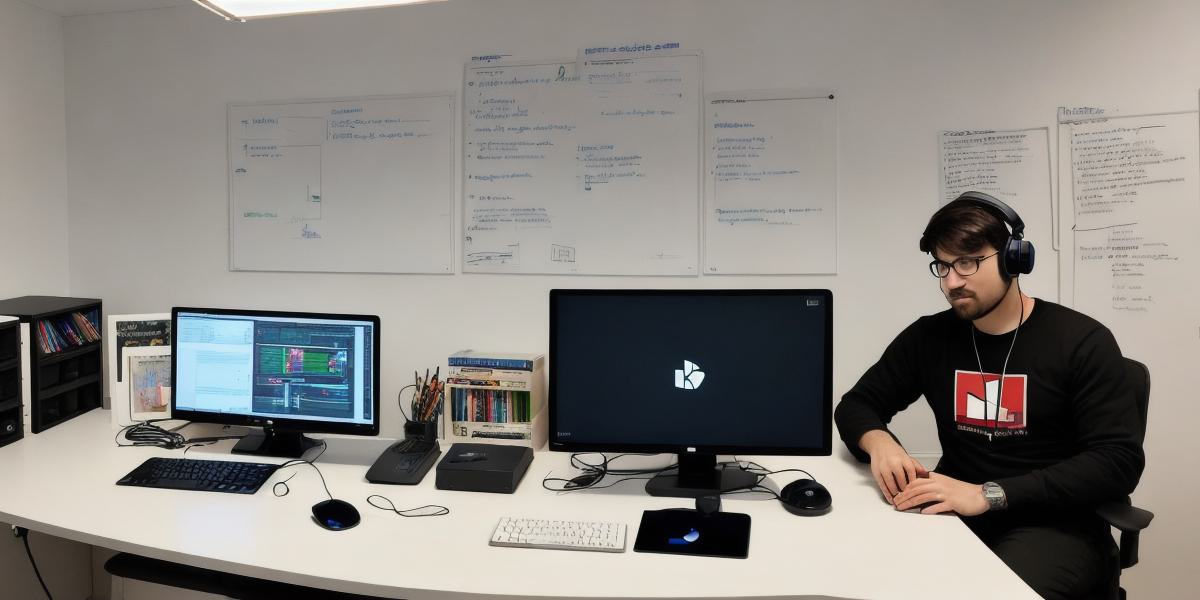Introduction:
Unity is a popular game engine and development platform used by developers worldwide. It offers a wide range of features and capabilities, making it an ideal choice for creating 2D, 3D, and AR/VR games, simulations, and other interactive applications. However, before diving into Unity development, it’s important to ensure that you have the right system requirements in place. In this guide, we will explore the minimum and recommended system requirements for running Unity, as well as some tips and tricks for optimizing your performance and ensuring a smooth development experience.
Minimum System Requirements:
The minimum system requirements for running Unity depend on several factors, such as the version of Unity you are using, the complexity of your project, and the hardware configuration of your computer. Here are some general guidelines:
- Operating System: Windows 7 SP1+, macOS 10.9 Mavericks or later, Linux 64-bit

- Processor: Intel Core i3 or better, AMD FX series or better
- RAM: 4 GB or more
- Graphics Card: Dedicated graphics card with 2 GB of VRAM or better (Integrated graphics cards are not recommended)
It’s important to note that these requirements are just a starting point and may vary depending on your specific needs. For example, if you plan to develop games with high-end graphics or require advanced features such as physics simulation, you may need a more powerful system.
Recommended System Requirements:
While the minimum system requirements can get you started with Unity development, for optimal performance and productivity, it’s recommended to have a more powerful system in place. Here are some guidelines for recommended system requirements:
- Operating System: Windows 10, macOS 10.12 Sierra or later, Linux 64-bit
- Processor: Intel Core i5 or better, AMD Ryzen series or better
- RAM: 8 GB or more
- Graphics Card: Dedicated graphics card with 4 GB of VRAM or better (Integrated graphics cards are not recommended)
These requirements are just a general guideline and may vary depending on your specific needs. For example, if you plan to develop games with high-end graphics, advanced physics simulation, or complex animations, you may need an even more powerful system.
Optimizing Performance:
To ensure optimal performance while developing with Unity, there are several things you can do. Here are some tips and tricks:
- Use a dedicated graphics card: As mentioned earlier, dedicated graphics cards are highly recommended for Unity development. They offer significantly better performance than integrated graphics cards, especially when it comes to handling complex graphics and animations.
- Keep your computer clean: Regularly cleaning your computer can help improve its performance by removing unnecessary files and software. This can help free up valuable resources such as RAM and hard drive space.
- Close unnecessary programs: When developing with Unity, it’s important to close any unnecessary programs that may be running in the background. This can help reduce memory usage and improve overall performance.
- Use optimization tools: Unity offers several built-in optimization tools that can help improve your performance, such as the profiler and the frame rate counter. These tools can help you identify performance bottlenecks and optimize your code for better performance.
Real-life Examples:
To give you a better idea of what’s possible with Unity development, let’s look at some real-life examples of games and applications that have been created using the platform:
- Monster Hunter World: This popular game was developed by Capcom and uses Unity to create its stunning 3D graphics and immersive gameplay experience. The game requires a powerful system to run smoothly, with recommended system requirements that include an Intel Core i7 processor, 16 GB of RAM, and an NVIDIA GTX 1080 graphics card.
- Pokémon Go: This mobile game was developed by Niantic and uses Unity to create its augmented reality experience. The game requires a compatible smartphone with an internet connection to play. While the system requirements for this game are not explicitly stated, it’s safe to say that any modern smartphone should be able to run it smoothly.
- The Room: This puzzle game was developed by Fireproof Studios and uses Unity to create its 2D graphics and immersive gameplay experience.
